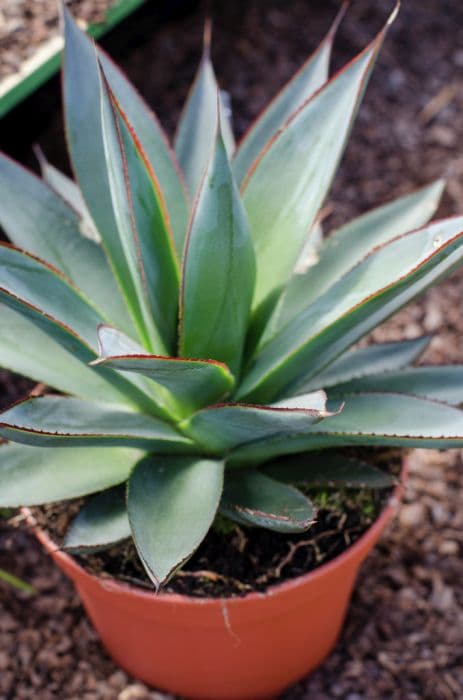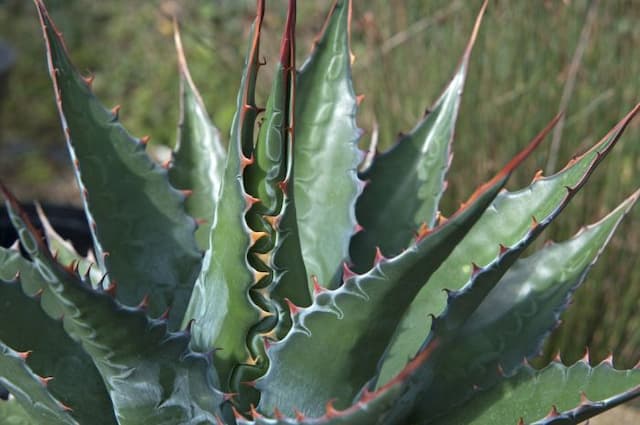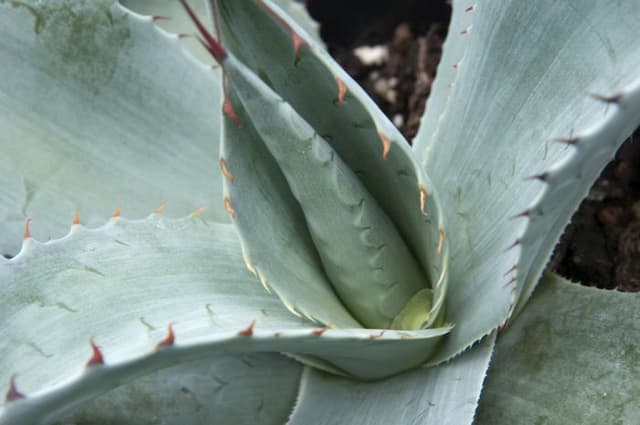Hybrid Bluebell Scilla × allenii 'Frà Angelico'

ABOUT
Scilla × allenii 'Frà Angelico', commonly known as Chionodoxa or Glory-of-the-snow, is a delightful bulbous plant that graces the garden with its presence in the spring. This particular variety has a charming appearance, featuring star-shaped flowers that exhibit a stunning, rich color palette. The blossoms are usually a soft violet-blue hue, with a striking, lighter center that often looks almost white, creating a lovely contrast that resembles a twinkling star. The flowers of the Chionodoxa bloom in loose clusters, known as racemes, that bring a joyful display when many are grouped together. Each flower consists of six pointed petals, spreading outward from the corolla, with the lighter center further accentuated by the darker color of the petals' edges. The stamens, which carry the pollen, are centrally located, standing out with bold yellow or sometimes lighter hues, enhancing the overall beauty of the flower. The leaves of this plant are also noteworthy, typically narrow and strap-like, with a glossy green appearance that provides the perfect backdrop for the vibrant blooms. They often emerge from the base of the plant, forming a lush, green ground cover that further highlights the floral spectacle above. Together, the graceful flowers and verdant foliage of the Glory-of-the-snow create a striking visual impact in the garden. Little wonder why it is cherished by gardeners, as it not only brightens the landscape but also signals the hopeful transition from the cold, barren months to the renewal and warmth of spring.
About this plant
 Names
NamesFamily
Asparagaceae
Synonyms
Frà Angelico Hyacinth, Allen's Scilla
Common names
Scilla × allenii 'Frà Angelico'.
 Toxicity
ToxicityTo humans
The plant commonly known as Chionodoxa (Scilla × allenii 'Frà Angelico') is considered to have a certain level of toxicity to humans. If ingested, parts of this plant can cause symptoms such as nausea, vomiting, diarrhea, and abdominal pain. Handling the plant may potentially cause skin irritation for sensitive individuals. It's important to avoid consuming any part of this plant and to wash hands thoroughly after handling it to prevent any possible negative effects.
To pets
Chionodoxa (Scilla × allenii 'Frà Angelico') is also toxic to pets, including cats and dogs. If a pet ingests any part of the plant, they might exhibit symptoms such as vomiting, diarrhea, drooling, or lethargy. More severe cases can lead to increased heart rate and difficulty in breathing. It is very important to keep this plant out of reach of pets and to seek veterinary attention immediately if a pet is suspected to have ingested any part of it.
 Characteristics
CharacteristicsLife cycle
Perennials
Foliage type
Deciduous
Color of leaves
Green
Flower color
Blue
Height
6 inches (15 cm)
Spread
4 inches (10 cm)
Plant type
Bulb
Hardiness zones
7
Native area
Europe
Benefits
 General Benefits
General Benefits- Ornamental Appeal: Adds a splash of color to gardens with its striking blue flowers during the spring.
- Low Maintenance: Requires minimal care and is easy to grow, making it ideal for beginner gardeners.
- Drought Tolerance: Once established, it can survive with relatively little water, making it suitable for xeriscaping.
- Attracts Pollinators: Bees and other beneficial insects are drawn to its nectar and pollen, aiding pollination of surrounding plants.
- Naturalizing: It tends to spread over time, creating a natural, wildflower-like appearance in gardens.
- Versatility: Suitable for borders, rock gardens, and underplanting beneath taller plants or shrubs.
- Seasonal Interest: Its early spring blooming provides interest in the garden at a time when other plants may not be flowering yet.
 Medical Properties
Medical PropertiesThis plant is not used for medical purposes.
 Air-purifying Qualities
Air-purifying QualitiesThis plant is not specifically known for air purifying qualities.
 Other Uses
Other Uses- Scilla 'Frà Angelico' can be used in pressed flower art due to its small size and vibrant color. The flowers can be preserved by pressing them between books or using a flower press.
- The plant can be a vibrant addition to fairy gardens, due to its miniature size and appealing blue flowers providing a whimsical touch.
- 'Frà Angelico' bulbs can be used as a natural dye source for fabrics and yarns, with the potential to yield various shades of blue and purple.
- The plant is suitable for use in photography, providing a vivid splash of color for macro photography subjects and garden scenes.
- It can be planted to create a 'living mulch' under deciduous trees, where its early bloom complements woodland settings before the tree canopy fills in.
- The flowers can be used in potpourri mixes, as they can maintain their color when dried, adding visual appeal to the mix.
- Used as a part of floral education programs, students can study 'Frà Angelico's' growth patterns and blooming habits in horticultural courses.
- The plant's early bloom time makes it a useful indicator for phenological studies which monitor the effects of climate change on flowering times.
- Can be incorporated into land art, where gardeners and artists use natural materials to create outdoor sculptures and installations.
- It is ideal for creating blue-themed gardens, where gardeners group plants by color to create a visually striking display.
Interesting Facts
 Feng Shui
Feng ShuiThe Chionodoxa is not used in Feng Shui practice.
 Zodiac Sign Compitability
Zodiac Sign CompitabilityThe Chionodoxa is not used in astrology practice.
 Plant Symbolism
Plant Symbolism- Resilience: Scilla, also known as squill, is a sturdy plant that braves through cold winters to bloom in early spring, symbolizing the ability to overcome challenges and adversity.
- Hope: As one of the first flowers to bloom after the cold months, squill represents hope and the promise of better times ahead with its bright blossoms signaling the arrival of spring.
- New Beginnings: Squill's emergence in springtime is emblematic of fresh starts and the renewal of life, often associated with new projects, endeavors, or stages in life.
- Constancy: The recurrent blooming of squill every year can be seen as a symbol of reliability and faithfulness, suggesting unwavering presence or feelings.
- Perseverance: Their ability to multiply and spread shows squill as a symbol of determination and the will to push forward despite difficulties.
 Water
WaterFor the Chionodoxa 'Frà Angelico', also known as Glory-of-the-Snow, it's important to maintain a regular watering schedule during the active growth and blooming period, ensuring the soil is consistently moist but not waterlogged. Water the plant when the top inch of soil feels dry to the touch. On average, this plant may need to be watered once every week, using roughly one gallon per square foot of soil area, depending on environmental conditions. During the dormant period, after the flowers have faded, reduce watering significantly to prevent bulb rot. Always use a gentle watering method to avoid dislodging the bulbs or eroding the soil.
 Light
LightGlory-of-the-Snow thrives best in full sun to partial shade conditions. A spot that provides morning sun and afternoon shade would be ideal for this plant, as it prefers a bit of protection from the intense heat of the late day sun. Consistency in light is key, and the plant will perform well in a location that ensures a few hours of direct sunlight each day, complemented by dappled or partial shade.
 Temperature
TemperatureGlory-of-the-Snow is hardy and can tolerate a wide temperature range, surviving in temperatures as low as 20 degrees Fahrenheit during its dormant period in winter and thriving in temperatures up to 75 degrees Fahrenheit during the growing season. Ideally, maintain an environment where the temperature stays between 50 and 70 degrees Fahrenheit to promote healthy growth and flowering.
 Pruning
PruningGlory-of-the-Snow typically does not require extensive pruning. Deadheading, or the removal of spent flower heads, may be performed to keep the plants looking tidy and potentially encourage a more robust bloom the following season. Pruning should be done after the flowers fade but before seed setting, using clean, sharp shears. This plant does not typically need cutting back or thinning unless the clumps become too dense.
 Cleaning
CleaningAs needed
 Soil
SoilScilla 'Frà Angelico' prefers well-drained soil rich in organic matter. A mix of loamy soil, peat, and sharp sand is ideal. It should have a slightly acidic to neutral pH (around 6.0-7.0).
 Repotting
RepottingScilla 'Frà Angelico' should be repotted every 2-3 years or when it becomes root-bound.
 Humidity & Misting
Humidity & MistingScilla 'Frà Angelico' thrives in moderate humidity levels, typical of household environments, but does not require high humidity.
 Suitable locations
Suitable locationsIndoor
Place in bright, indirect light and maintain moderate humidity.
Outdoor
Plant in partial shade, protect from harsh sun and heavy frost.
Hardiness zone
4-8 USDA
 Life cycle
Life cycleScilla × allenii 'Frà Angelico', commonly known as the hybrid bluebell 'Frà Angelico', begins its life cycle when a seed germinates in well-drained, fertile soil, typically in the spring. As it grows, a bulb forms underground from which foliage sprouts; the plant develops strappy leaves and a flower stalk. The flowering stage occurs during the spring when bell-shaped, blue-violet flowers bloom, attracting pollinators. Following pollination, the flowers develop into fruit capsules containing seeds, which, when mature, disperse to propagate new plants. The plant enters a period of dormancy during the summer when the foliage dies back, and the bulb remains dormant underground. In the subsequent spring, the cycle restarts as the bulb sends up new growth, continuing its perennial life cycle.
 Propogation
PropogationPropogation time
Spring
Propogation: Scilla × allenii 'Frà Angelico', often referred to as a hybrid bluebell, is typically propagated by division, which is the most popular method. This process is best done in late summer to early fall after the foliage has died back. Carefully dig up the bulbs, handling them gently to avoid damage. Once excavated, separate the small bulb offsets, also known as bulblets, from the parent bulb. These can be replanted immediately at a depth of about 3 inches (7.6 cm) and spaced approximately 3 to 4 inches (7.6 to 10.2 cm) apart to allow room for growth. Ensure they are planted in well-drained soil and in a location where they can receive ample sunlight to part shade. Water them in well after planting to help establish the new bulbs.









